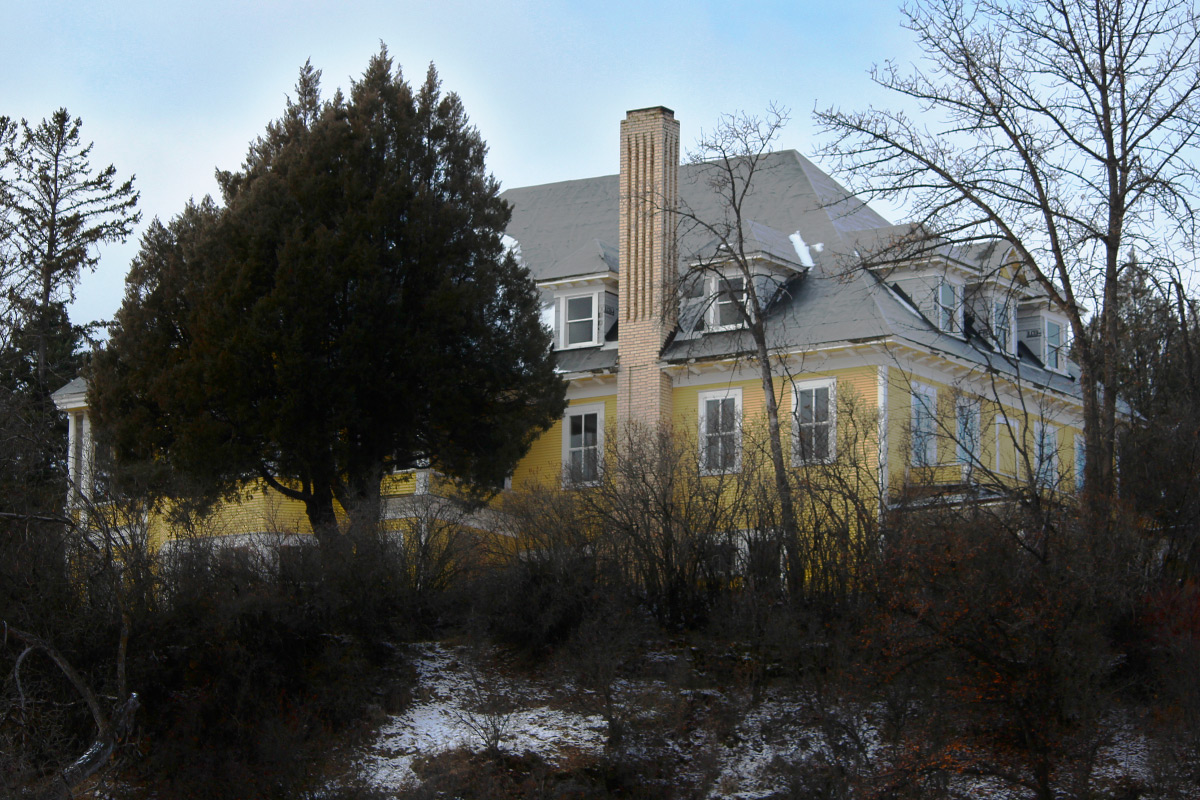A yellow mansion atop a hillside overlooking Flathead Lake is a landmark that’s hard to miss. Yet while the architecture may seem obvious, the “meaning” of the mansion may seem a bit obscure nowadays.
The mansion was built in 1903 – a time when prominence and posture mattered to a man and his business. It bears the name of John O’Brien, manager of the John O’Brien Lumber Co. (later the Somers Lumber Company). The company was impressive and touted a “Sawing Capacity of 60,000,000 yearly and a Shipping Capacity of 250,000 feet daily.” Aside from producing boxes, sashes, doors and other lumber goods, the company milled triangle-shaped railroad ties, for which the Great Northern Railway had tremendous demand as it laid tracks across the nation.
The mansion was designed by architect A.J. Gibson (who designed other mansions, courthouses and civic buildings in his time). And a home of any lesser stature could hardly befit a man in charge of such an enterprise – and the town itself, as O’Brien built the general store and some 120 residences that surrounded the mansion as well.
For O’Brien, a towering icon of distinction was necessary. After all, this was an era when men of ambition sought ever-wider reputations and were resolved in making their position clear in their doings, deeds and domiciles. Hence, “status” and “ambition” certainly influenced the design of the mansion.
For example, the form boasts three floors, 14 bedrooms, and nearly 8,000 square feet epitomizing late Victorian ideals. The floors are sophisticated with intricate patterns. The fireplaces are wide, as much to provide an expanse of warmth as to suggest a formidable stature. And the long hallway on the second floor accommodates an economy of space, yet provides a fetch across the expanse of the home. Even the approach to the mansion suggests advancement as workers and company men had to walk up – and literally look up – to the “man inside the mansion” upon each visit.
Likewise, the many windows, including the towering, three-story bay windows, provided light to see and saturate ideas, but also provided means to keep watch over the workers’ productivity and operations in general. Situated atop the hill, O’Brien could preside over the company and the town in every direction (and amuse himself watching ice-skaters on the lake just the same). He could keep watch over the doings at the dock, along the rails, and around the shops, all the same. Hence, the mansion – much like the man – intended to be omnipresent, ever keeping a watchful eye above the company town.
And therein lies the “meaning” of the home. It was not just an ordinary house on the hill. It was an icon of O’Brien’s position and stature, his observation deck for company operations, and a luxurious masterpiece to indulge and impress his fellow esteemed guests.
While the mansion fared quite well in the years since 1906 when O’Brien left, it has more recently suffered damage from a wind-torn roof and subsequent exposure to the elements (circa 2008), and the selfish hands of trespassers and vandals. Unfortunately, every bit of damage and stolen bit of hardware, blemishes the O’Brien Mansion and other Flathead Valley landmarks (and questions the very meaning of their historical significance).
Jaix Chaix will be hosting a book signing party on Friday, Nov. 28, and Saturday, Nov. 29, from 10 a.m. – 2 p.m. Stop by the Flathead Beacon at 17 Main St. in Kalispell to celebrate the release of his latest book “Flathead Valley Landmarks: Historic Places & People of the Past.” His other local history books will also be available for sale.
